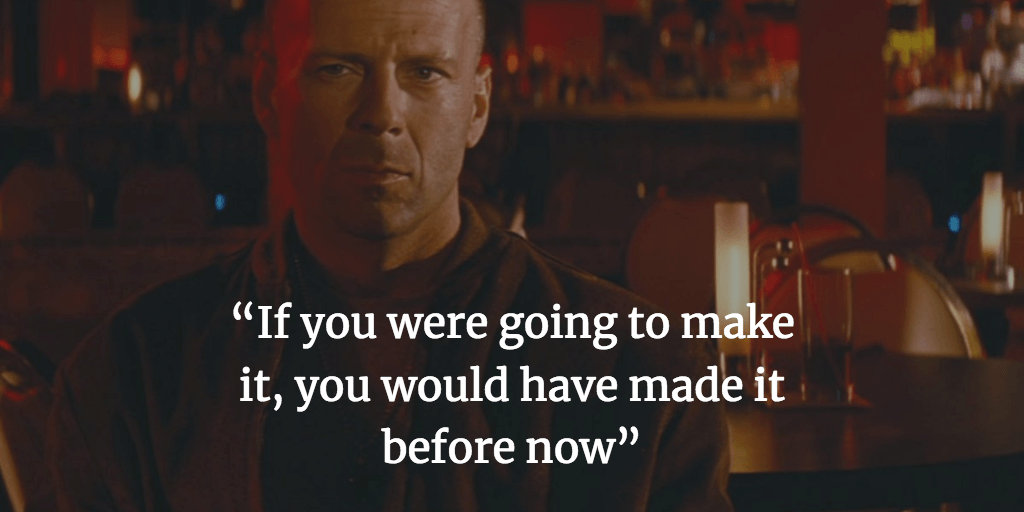How to diagnose poor performers
The quarter just ended, and your bottom rep, let's call him Tim, again didn’t make the number. He’s been at it for seven months, and though he’s had flashes of brilliance, he can’t seem to get things going. You’re feeling frustrated about his performance but also empathetic and don’t want to “cut the cord” too soon. Here are my favorite nuggets to help determine if its time to turn Tim.
More...
Is there forward progress?
This is a simple one- is Tim doing better than he was doing last week? Is he absorbing your coaching and acting on it?
What are your 1:1’s like?
Is this time being used as a statistical review of activity (# of dials, # of contacts added to Salesforce, etc.) or is it a two-way conversation? Too often, 1:1’s devolve into reviewing numbers on reports then chastising the rep for not hitting the correct KPI’s. While there is a time and place for this kind of review if you really want to figure out what’s broken, have him take you through his activity (demos, discovery calls, etc.) for the week- in detail. Review everything from the title of the person he’s meeting with to the needs uncovered, all the way to closing and next steps. Is the rep clear on what pain he’s solving for and why the prospect is interested or is he simply doing a “show up and throw up” presentation?
This process will be painful if done properly but can make it very easy to identify areas for improvement.
How does the rep utilize you? Are you on calls with him?
Does he let you know in advance about important prospect calls, or is it up to you to check his calendar every day and insert yourself? If he’s not using you, why? Is he “turtling in” due to embarrassment about his situation? Or is it something worse- that he doesn’t believe you can help him? Either way, have a really honest conversation here as soon as possible.
Have you had an honest conversation about how things are going?
I love to fly, so use the glide path analogy often. In aviation, glide path refers to an aircrafts line of descent to land, which is just a fancy way of saying if we keep doing what we’re doing now, when will our wheels touch the ground.
It’s the same for sales- if Tim keeps talking to the same number of people at the same close rate, what will happen? This simple exercise around just two numbers- activity and close rate can be very eye-opening for the rep because there’s no hiding from it. It simply is what it is and either needs fixing, or it doesn’t. Which leads us to…
Does the rep understand the nature of the issue and do they have a plan to fix?
The question can go something like this: “Tim, when you think about the struggles you’re having now, what do you think the biggest issue or issues are?” Then as a follow up: “And what is your plan to address those issues?” I can guarantee that you will hear “I don’t know” at some point, to which you can reply “I don’t know is not an acceptable answer. Can you take a second to think about it then share your thoughts?”
The object here is simple- is this person self-aware? Do they understand what got them here and do they have a basic plan for how to fix? If yes, maybe you can use the bones of that plan to help coach them moving forward. If they don’t know how they got here or what they can do to fix it, you’re one step closer to you answer about their status on your team.
What do their eyes tell you?
This one is going to get me in trouble with some of my friends in HR, but it's too powerful not to share. Watch their body language, especially the eyes. When you’re having some of the tough conversations mentioned above, your reps true colors will come out. You’ll either have one of those breakthrough conversations that make being a sales leader great, or you’ll see them go through the motions of what they think you want to hear given their lack of production. In my experience, once you see this, it’s already over.
Final Thoughts
Leading human beings is not an exact science. It often shifts and rarely follows a direct path, which is what makes it so gratifying when it works. Remember to have empathy as you move through this process with someone. You never know how things will end, or when your paths will cross in the future. Even if this process leads to their exit from your organization, you can still manage their departure with the same level of dignity and respect as you did during the onboarding process. The rewards for a solid exit include positive Glassdoor reviews, employee references/referrals, and most importantly- the knowledge that you handled another human being the right way.


